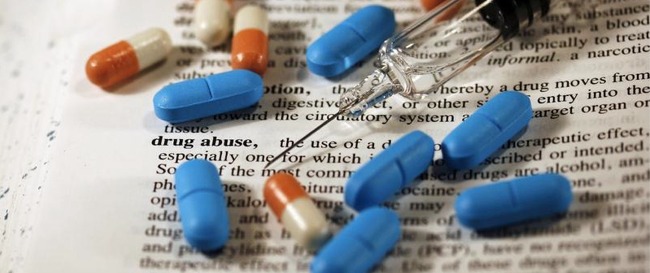Addiction Medicine
Nonmedical Use of Prescription Medications
Drug Diversion
Drug diversion can be best defined as the diversion of licit drugs for illicit purposes. Prescription drug abuse accounts for almost 30% of the overall drug problem in the United States, representing a close challenge to cocaine addiction. It is estimated that millions of Americans are addicted to prescription drugs. A large majority of these addicts are average citizens, with no prior history of drug abuse, who became addicted after first using prescription drugs for legitimate medical reasons. Often times however, these diverted prescription drugs end up on our streets where illegal drug abuse is an ever-growing problem.
Pharmaceutical diversion reaps large profits for the traffickers, and devastation for the abusers. This eventually affects their friends, families, and their workplace. The diversion of pharmaceutical drugs means that prescription drugs were illegally obtained by a variety of methods and a variety of offenders. This may have been accomplished by deception, or an outright theft of the drugs. Health care professionals face the prescription drug abuser on a daily basis. These drug seekers prey on physicians, pharmacists, dentists, and their staff, in a relentless attempt to obtain pharmaceuticals.
Valuable time is taken away from legitimate patients while health care professionals deal with drug seekers in the clinic, office, and hospital emergency rooms across the United States. These drug seekers see a multitude of health care professionals to obtain more and more of the prescription drugs they need to satisfy their addiction, and/or to sell at high profits on the Street. Moreover, these drug seekers are in serious need of treatment themselves and don’t seek help until some traumatic event occurs.
Treatment Population:
Persons who develop substance use and dependency problems through drug diversion are often at risk for co-existing medical and psychiatric problems. Similarly, patients in addictive disorder treatment commonly experience medical and psychiatric problems, which can distract from the recovery effort and increase relapse risk. Yet providers operate in distinct systems of care, each with its own, often exclusive focus. As a result, substance using patients with psychiatric or medical illness sometimes are bounced between systems, told they must be abstinent before they can receive treatment for their psychiatric and medical problems or told they are too sick (medically or psychiatrically) to get into an addiction treatment program resulting in a clinical “catch 22.” Patients who present with complex, interrelated, comorbid problems make apparent the need for a more comprehensive evaluation and treatment approach.
Diversion Strategies
Drug-seekers often fake medical conditions or ailments in an effort to obtain pharmaceutical drugs. A variety of physical problems can be convincingly portrayed by drug-seeking patients. These run the gamut from bleeding (often stimulated by the use of anticoagulants-and self-inflicted skin lesions) to gastrointestinal and musculoskeletal disorders. Three of the most common presenting ailments among patients seeking narcotic drugs are renal colic, toothache, and tic douloureux.
- A patient feigning renal colic complains of pain on the left side of the body (to avoid a diagnosis of appendicitis) and a burning sensation on urination.
- Patients presenting with toothache often claim to be from another town and to have left at home the medications prescribed by their dentist. Should the physician wish to verify this claim, the telephone number supplied for the hometown dentist often is that of an accomplice.
- Tic douloureux is a favorite approach among drug-seeking patients because it has no clinical or pathologic signs. Patients complain of recurring, intense episodes of facial pain lasting several seconds to several minutes. Some patients are able to contort their faces to simulate an attack of pain. Although many “conning” tactics seem obvious when described, they can be used convincingly, especially in the midst of a busy medical office or emergency department.
A large majority of these pharmaceuticals are obtained illegally via fraudulent prescriptions. Drug seekers often alter a legitimate prescription by use of a pen with the same color ink as the original prescription. Often times these drug seekers alter the number of refills on the prescription. Other drug seekers forge prescriptions from scratch. The forger begins with either a blank piece of paper or a legitimate prescription blank from a practicing physician. In the former case, the forger stencils a physician’s name and address (as well as the telephone number of an accomplice) in black lettering onto a blank page and then uses a photocopier to reduce the sheet to the size of a prescription. To the drug seeker, a blank prescription is like a blank check. Prescription blanks are frequently stolen from emergency departments and in clinics, in part because of the carelessness of the medical staff.
Another common practice is the oral or telephonically communicated prescription. In this particular instance, the drug seeker will telephone his or her prescription directly to the pharmacy while claiming to be either the Doctor or an authorized member of the Doctor’s staff.
Drugs of Abuse:
The most commonly diverted/abused pharmaceutical drugs currently being sought by drug-seekers include: Vicodin, Vicodin ES, Lortab, Lorcet, Lorcet Plus, Norco, Tylenol #3, Tylenol #4, Diazepam, Xanax, Stadol (NS), Valium, Phenergan with Codeine, Tussionex, Oxycontin, Ultram, Ultracet, and Soma.
According to the Drug Abuse Warning Network (DAWN), fourteen of the top twenty most abused controlled substances in the United States, are prescription drugs. Benzodiazepines rank highest on the list, and are followed by the opiates or painkillers.
Top 20 Most Abused Drugs
- Cocaine
- Marijuana
- Heroin
- Unspecified benzodiazepine
- Alprazolam (Xanax)
- Clonazepam (Klonopin)
- Hydrocodone (Vicodin, Lorcet, Lortab)
- Amphetamine
- Diazepam (Valium)
- Lorazeparn (Ativan)
- Metharnphetamine (speed)
- Trazodone (Desyrel)
- Fluoxetine (Prozac)
- Carisoprodol
- Oxycodone (Percocet 5, Perdocan, Tylox)
- Valproic acid
- d-Propoxyphene (Darvocet N, Darvon)
- Amitriptyline (Elavil)
- Methadone
- LSD
Source: Drug Abuse Warning Network Emergency Room Data, 1999, Table 2.06A.












